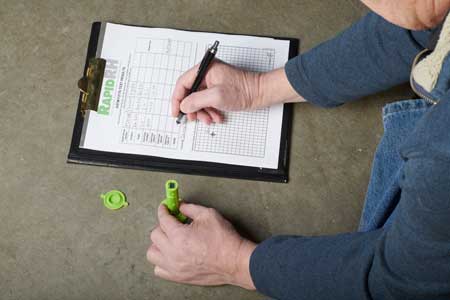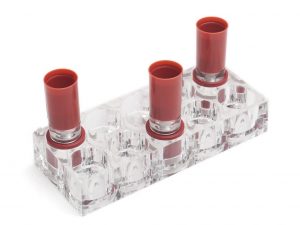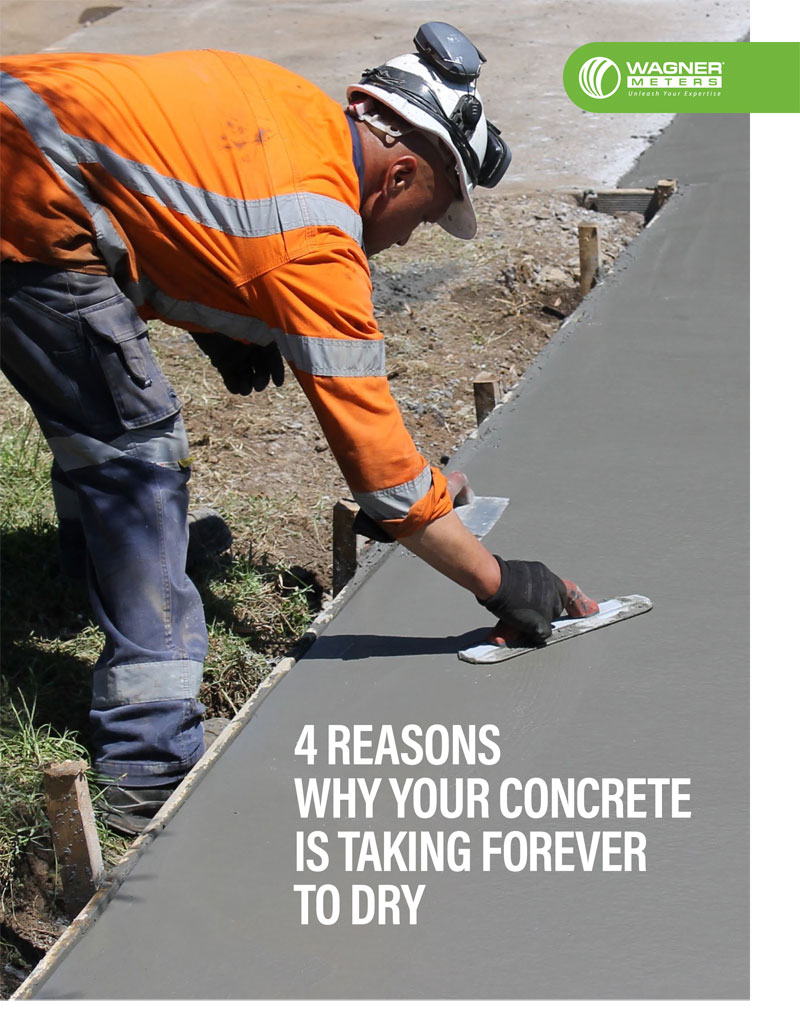Multi-Use vs. Single-Use Moisture Sensors
Contractors and flooring installers take note: when it comes to testing for moisture in concrete slabs, the scientific evidence points to in situ relative humidity (RH) testing as the clear winner for accuracy and reliability.

ASTM International has established an industry standard, ASTM F2170, that builds on the science and sets forth guidelines to ensure proper RH testing.
Professional installers assess RH in concrete slabs by inserting probes to measure water vapor levels. However, not all concrete RH probes are alike. In fact, two distinct types are available: single-use and reusable. In a world that increasingly emphasizes recycling, one might consider reusable probes to be the preferred option over their single-use cousins. Why buy a new one if the old one will still do?
In the world of concrete moisture testing, the answer may not be quite as simple as it first appears.
Reusable Probes
 Reusable probes contain RH sensors which are inserted into a sleeve installed in the concrete slab. ASTM F2170 requires a 24-hour wait time, after drilling and inserting the sleeve, so that moisture can fully equilibrate in the “empty” sleeve.
Reusable probes contain RH sensors which are inserted into a sleeve installed in the concrete slab. ASTM F2170 requires a 24-hour wait time, after drilling and inserting the sleeve, so that moisture can fully equilibrate in the “empty” sleeve.
After the 24-hour mark, a sensor is then inserted into the sleeve and it (the sensor) needs to then equilibrate to the environment. Reliable readings can then only be taken once the RH or temperature readings are stable (per ASTM guidelines, they can’t fluctuate, up or down, more than 1% over a five minute time period).
This equilibration process has to happen each time the sensor is placed in an “empty” sleeve.
Advantages may exist in using reusable probes – most notably potential cost savings for professional flooring inspectors, engineering firms, concrete testing agencies or anyone else who makes a living completing these tests and completely understands the requirements for using this type of RH testing system. However, most contractors and flooring installers will find that such advantages are more than offset by a very clear and significant drawback: time.
For example, the larger the concrete slab and the more locations at which measurements must be taken, the greater the need to remove and reset the probes at different test locations. In addition, after probes are reset at each new location, one must again allow for temperature and RH equilibration in order to complete an ASTM-compliant assessment of moisture condition.
Another significant time factor relates to the calibration of reusable probes. Every reusable probe must be verified for calibration within 30 days of each use. Typically, this means taking the time to verify calibration using equipment supplied by the manufacturer. Only the Rapid RH® 5.0 reusable Smart Sensor is designed to minimize the time need for calibration.
Wagner Meters has developed the innovative, uniquely designed EasyCare CalCheck® specifically for this purpose. For all other reusable probes from other manufacturers, checking calibration can mean a very significant time investment.
Additionally, sensors must be sent back to the manufacturer once per year for calibration verification. Due to the digital technology of most of the sensors, they can’t be “recalibrated” so they are either replaced or rebuilt each year at an additional cost; for the sensors that can be recalibrated, the cost is usually substantial.
Single-Use Probes
 Single-use sensors are the RH sensor of choice for most contractors and flooring installers, and for good reason. They are extremely fast and easy to use. They are certified for use right out of the package and never need recalibration.
Single-use sensors are the RH sensor of choice for most contractors and flooring installers, and for good reason. They are extremely fast and easy to use. They are certified for use right out of the package and never need recalibration.
Once deployed inside a concrete slab, they can be left in place for taking multiple readings without having to wait for each time for the 24-hour equilibration. This means that after the initial 24-hour wait, repeat readings can be taken quickly, accurately, and with full ASTM compliance without any additional equilibration time needed.
When considering labor costs as well as being mindful of project schedules, this may equate to very significant cost savings. In addition, once single-use sensors are placed, they are so innocuous that they can be left in place with no adverse effect on the concrete slab.
That`s the practical advantage. Place single-use probes across the slab`s breadth according to the ASTM standard, and you can cost-effectively assess overall concrete slab RH, plus conveniently monitor the slab’s moisture condition over time as needed.
As with the reusable Rapid RH® 5.0, Wagner Meters manufactures the digital single-use Rapid RH® probes in full compliance with the ASTM F2170 standard.
In fact, with Rapid RH® sensors, you can obtain a measurement of RH in just one hour that will be within three to five percent of the final ASTM-compliant RH reading. For unparalleled accuracy, speed, and cost-efficiency, most contractors, and flooring installers find that single-use RH probes clearly trump their reusable partners.

Free Download – 4 Reasons Why Your Concrete Is Taking Forever to Dry
Learn how to accurately test moisture in concrete with our guide.
Download the Rapid RH ASTM F2170 Checklist – Ensure Accurate RH Testing Every Time!
Jason has 20+ years’ experience in sales and sales management in a spectrum of industries and has successfully launched a variety of products to the market, including the original Rapid RH® concrete moisture tests. He currently works with Wagner Meters as our Rapid RH® product sales manager.
Last updated on February 12th, 2025



